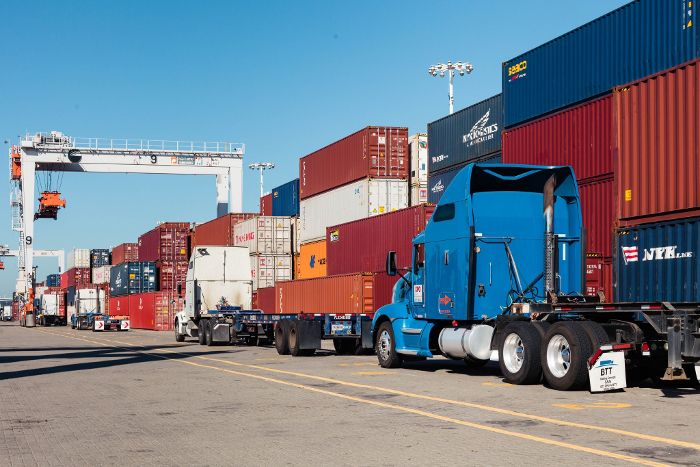The Alameda County Transportation Commission has received US$12.45m from the California Transportation Commission for the implementation of the Freight Intelligent Transportation System (FITS) program at the Port of Oakland.
Currently the fifth busiest container port in the USA, Oakland’s FITS program includes 15 freight technology demonstration projects that are designed to address traffic management, security systems, and roadway improvements at the seaport. The new finance comes from California Senate Bill 1 funds. The Port authority says the FITS technologies will reduce congestion and improve traffic flow for truckers who haul cargo containers in and out of Oakland, while also updating security systems, and providing a common communication platform for first responders.
The 15 FITS demonstration projects include:
- Interagency emergency operations and traffic management center;
- WiFi for truckers to access traffic and terminal gate updates;
- Changeable message signs to show traffic delays for truckers;
- Vehicle queue detection for accurate measurement of truck turn times;
- Mobile smartphone app for truckers.
The Alameda County Transportation Commission will administer construction of 13 FITS improvement projects, while the Port authority will administer construction of two projects that are security related. The FITS program is also a component of the California Transportation Commission’s GoPort Program, which is designed to improve freight movement in the Oakland Seaport area. The GoPort Program also provides air quality benefits through reductions in truck idling and street congestion resulting from freight movement efficiency. The total cost of the FITS program is US$30.6m and all projects are scheduled to be completed by late 2021, followed by 12 months of systems testing. The entire project is expected to go live in late 2022.
“This funding will help improve the Port’s maritime operations,” said the Port of Oakland’s director of maritime division, John Driscoll. “FITS will help reduce truck wait times and provide a safer and more secure maritime area.”





